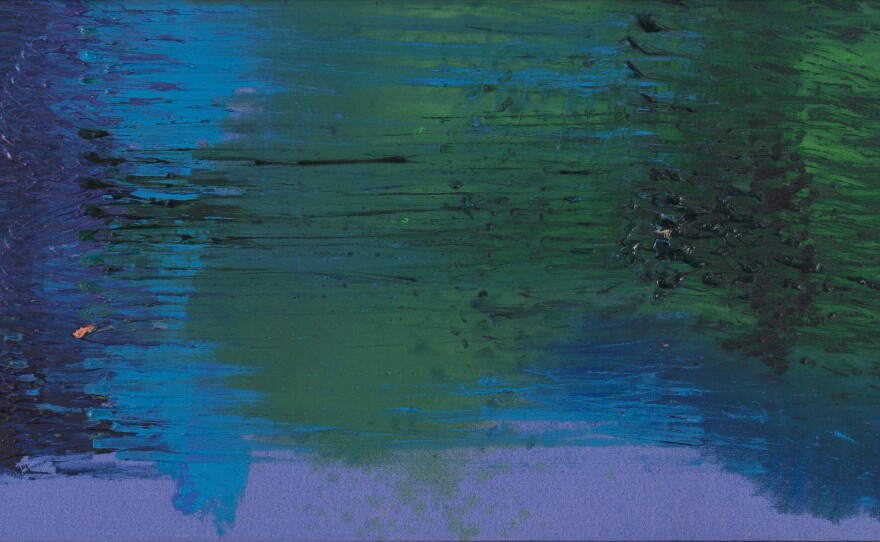The Clark Art Institute’s next exhibit features Helen Frankenthaler’s inventive approach to the woodcut and pioneering abstract art on nature.
Director Olivier Meslay – in his first summer at the Clark Art Institute in the northern Berkshires – says the season is so far, so good.
In April, MASS MoCA, the Clark Art Institute, the Williams College Museum of Art, Williamstown Theatre Festival, and the Bennington Museum in Vermont collaborated to highlight the region's cultural attractions.
“This initiative received a lot of good answers from public, from the press, and I think from organizations around the county and the country,” Meslay says.
The Clark says museum activity is definitely up this year – boosted in part by the opening of MASS MoCA’s Building 6 and Solid Sound Festival.
And in the spirit of playing off of the region’s eclectic culture, Meslay announced the opening of two Helen Frankenthaler exhibits – an abstract artist with deep ties to the Berkshires.
Curator Kathy Morris says Frankenthaler studied abstract art at Bennington College in Vermont, and was the Artist-in-Residence at Williams College in 1979. In the 1980s, Frankenthaler worked on a project at the Clark, Morris says.
“She was a very, very hands-on artist,” Morris says, “in terms of how it was displayed, how it was exhibited.”
Morris says the Clark kept that mantra in mind almost 40 years later.
Her exhibit, “As in Nature: Helen Frankenthaler Paintings,” has 12 very large scale paintings.
“It’s like a billboard,” Morris says. “They fill the galleries.”
Frankenthaler’s medium was oil paints and canvas. Morris says it was Frankenthaler’s own technique.
“So what she did, and this was the era of abstract expressionists – so you think of, like, Jackson Pollock, who was slightly older than her, you know, putting his canvases on the floor and then dripping paint on it with his great drip paintings,” Morris says. “She also was starting to work with the idea of putting un-stretched canvas on the floor and then manipulating paint on it.
She would mix and pour incredibly thin paint on a canvas…
“And sort of tilting the canvas to direct the paint in different directions and the paint was so thin that it would just soak into the canvas itself,” Morris says.
Staring into one of those paintings “Barometer”, finished in 1992, looks like a film of color.
“The oils had an effect that sometimes she used to great effect, but she ended up not really wanting to have to deal with it, and that is that oil paint has oils in it that leech out and create halos – a halo effect, like if you have a croissant in a paper bag and you look at the bag and you have this blotting of butter that’s coming through,” Morris says.
Frankenthaler later switched to acrylics to get rid of that effect and instead went for a much heavier, tactile style instead.
That exhibit is open until October 9th.
In the Manton Research Center, the works in the exhibit “No Rules: Helen Frankenthaler Woodcuts” have a much more pastel look.
Curator Jay Clarke says the devil is the details when it comes to understanding how Frankenthaler got this inventive approach to the woodcut.
Basically, a woodcut is made from a block of wood that is carved to make a shape before being soaked with ink or paint and then applied to a surface – like an old newspaper press.
But, Frankenthaler’s trick was to make her own paper from ground-up linen.
“Into this kind of goo – like think of oatmeal. Then you spread that goo over – that’s a very… goo is a technical term, by the way, over a something that looks like a screen that you would have on your porch,” Clarke says.
That then dries and is flattened, and voila: homemade paper. Clarke says this was an example of Frankenthaler always pushing the boundaries to get her craft just right.
“So it’s not only a sheet of artist-created paper, but it’s also a woodcut on top of it,” Clarke says. “This idea, again, of layers and layers and layers.”
That exhibit runs until September 24th.
In an interview in 1994, Frankenthaler said: “There are no rules, that is one thing I say about every medium, every picture . . . that is how art is born, that is how breakthroughs happen. Go against the rules or ignore the rules, that is what invention is about.”








